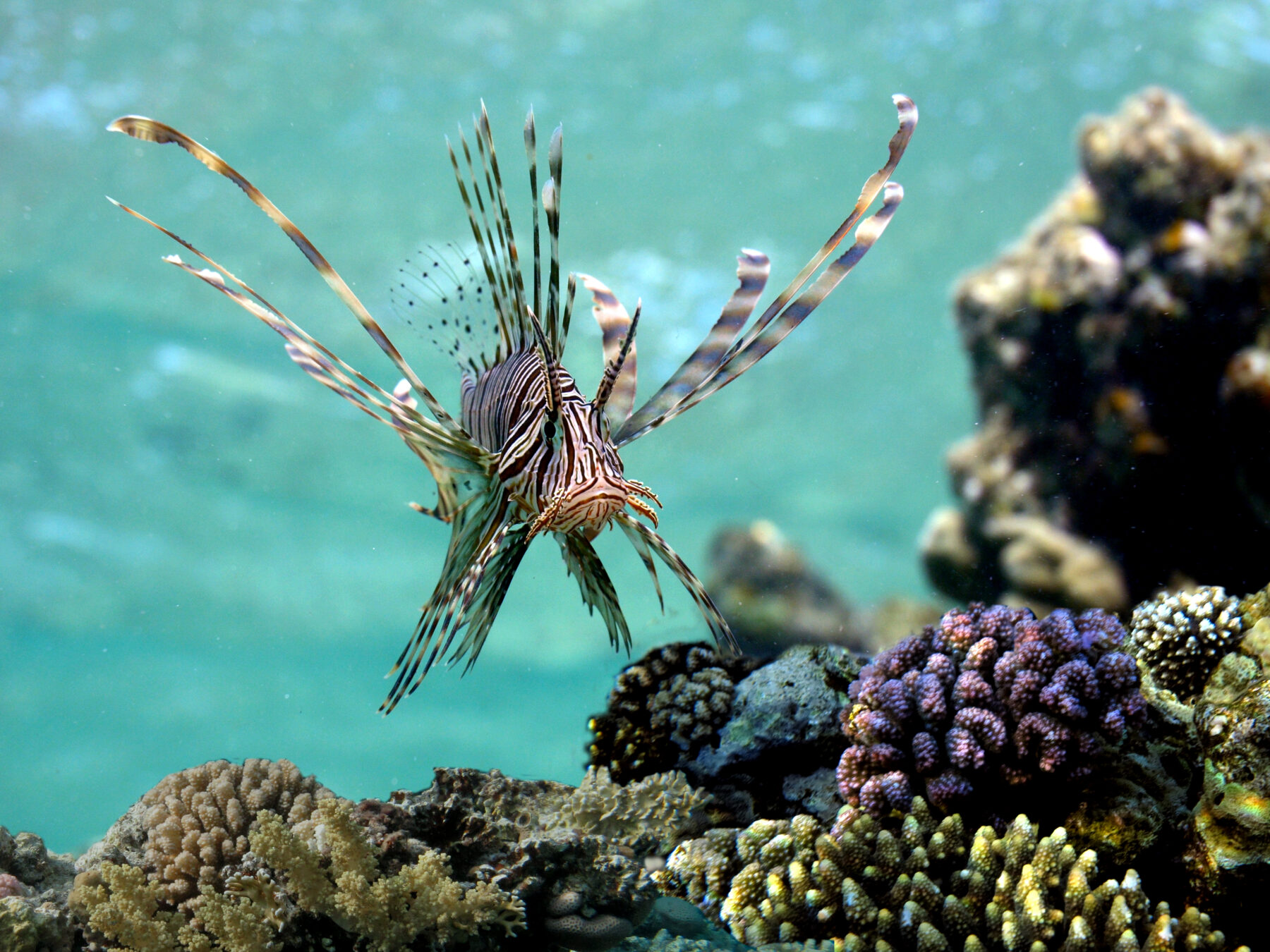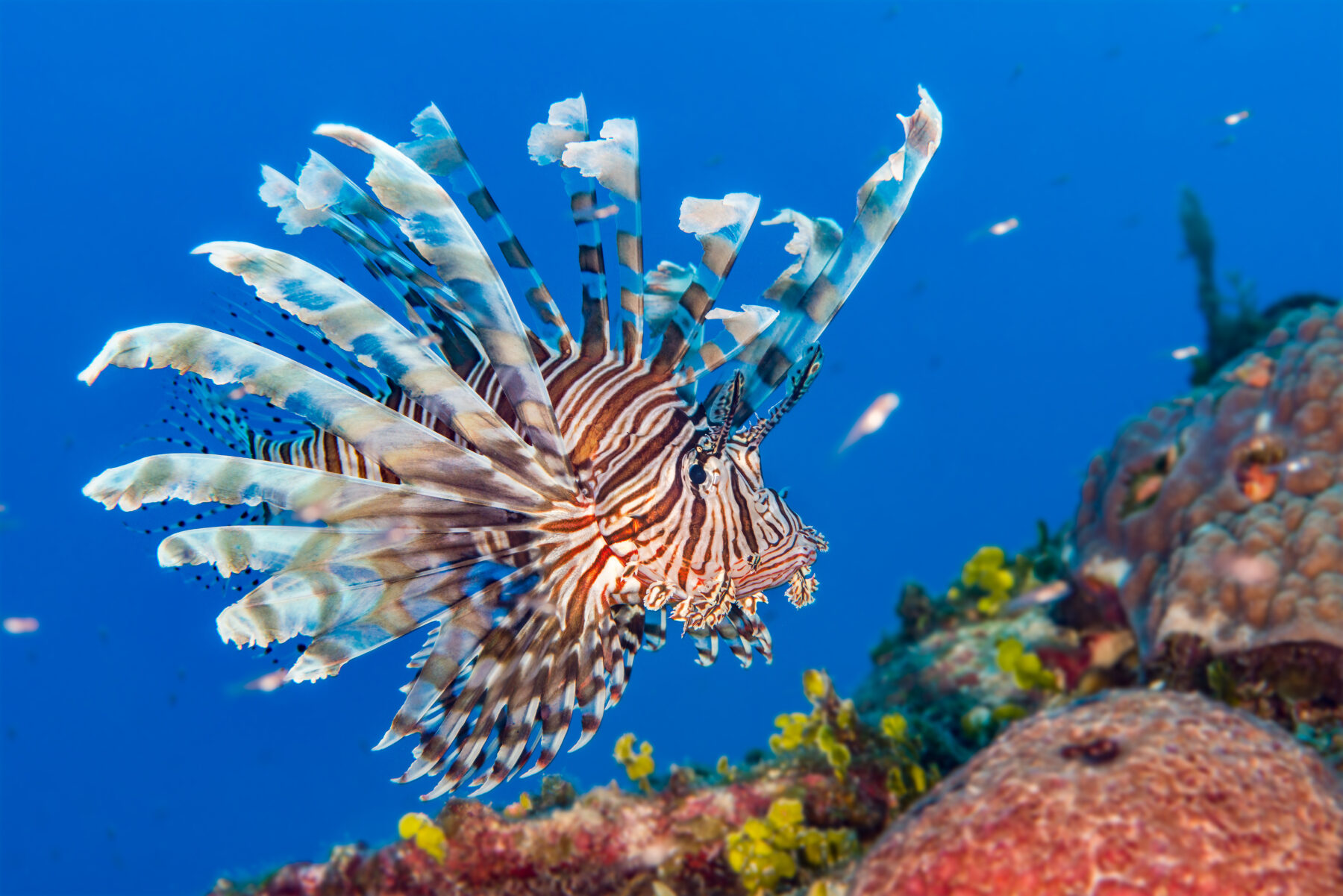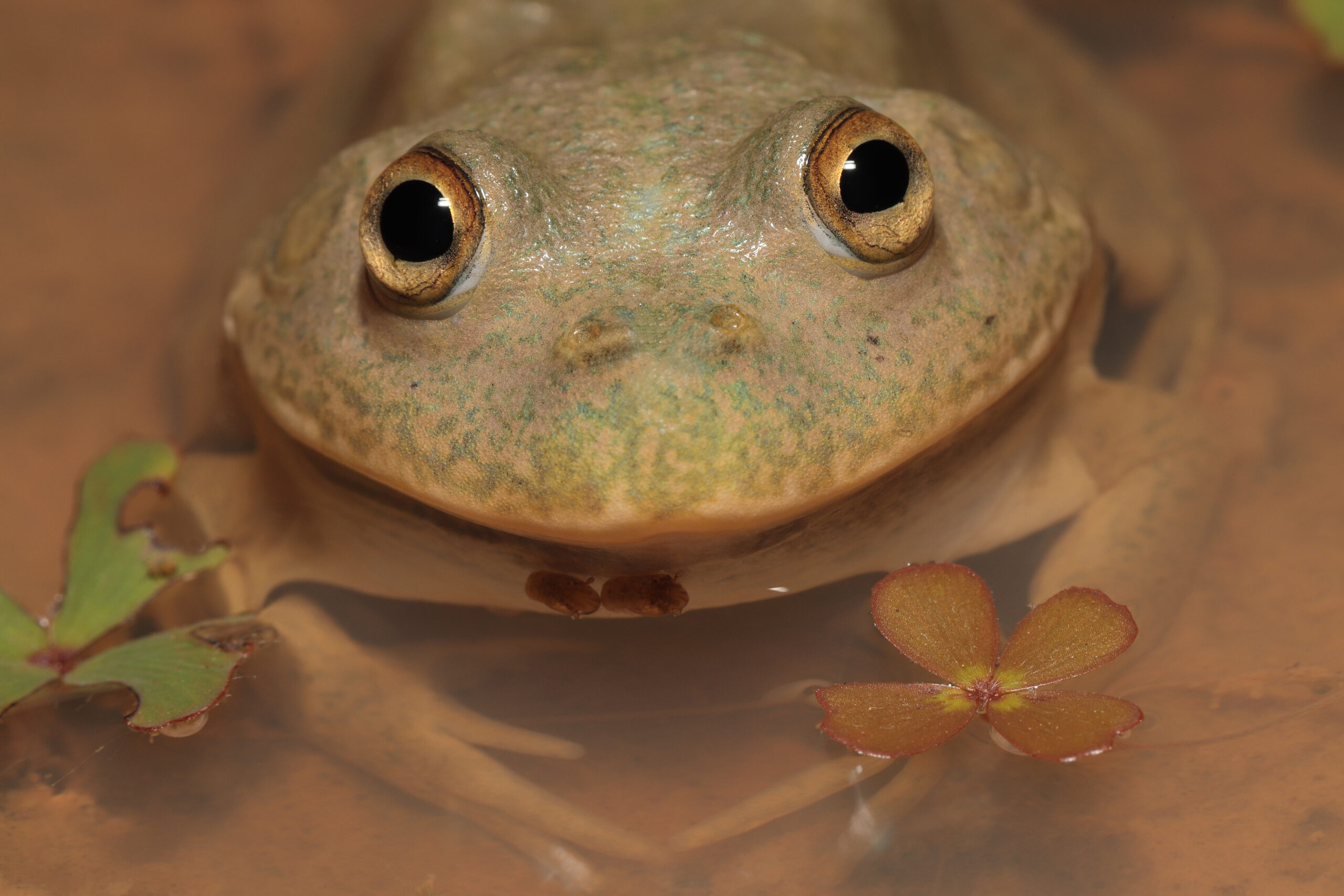| Common name | Common lionfish |
| Scientific name | Pterois volitans |
| Type | Fish |
| Diet | Fish, invertebrates, and molluscs |
| Average lifespan | 10 – 15 years |
| Size | Up to 38cm in length |
Don’t be fooled by the exotic and angelic appearance of the common lionfish. With its scientific name Pterois meaning ‘feathered or winged’, the common lionfish gives a delicate and whimsical impression, as it floats gently through the ocean, yet hidden beneath its dainty wings, are a collection of venomous spines.
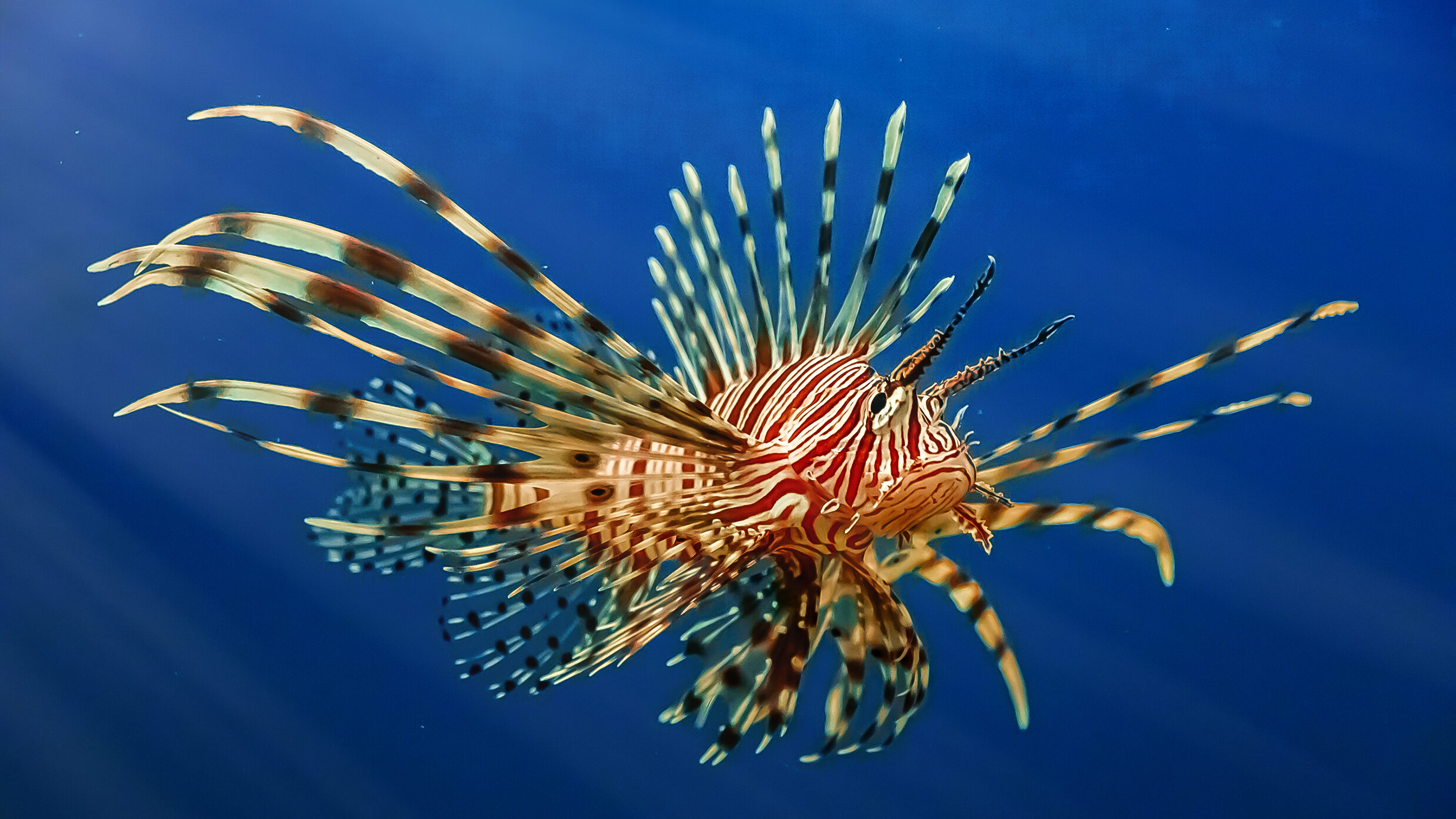
All 13 dorsal fin spines, one pelvic fin spine and three anal fin spines are toxic. Used only in self-defence, contact with the venomous spines are not fatal to humans, but can pack a mighty punch with post-sting reactions including high temperature, vomiting, dizziness and difficulty breathing. Venom from the common lionfish is protein-based, so it can be rendered inactive by applying heat or freezing, and first aid advice suggests pouring non-scalding, hot water on the sting sight immediately.
A tropical species, the common lionfish is found throughout the Indo-Pacific oceans. In Australia, they are known to inhabit the waters from south-western WA, around the tropical north of the country and down to the southern coast of NSW. With few natural predators, it is now recognised as a pest in the Western Atlantic, having a devastating effect on reef fish and coral populations thanks to its perpetual appetite.
An active predator that stalks its prey with its pectoral fins outstretched, the common lionfish can be aggressive. When disturbed by divers, the fish has been reported to stand its ground, instead of retreating, pointing its dorsal fin spines towards the intruder.
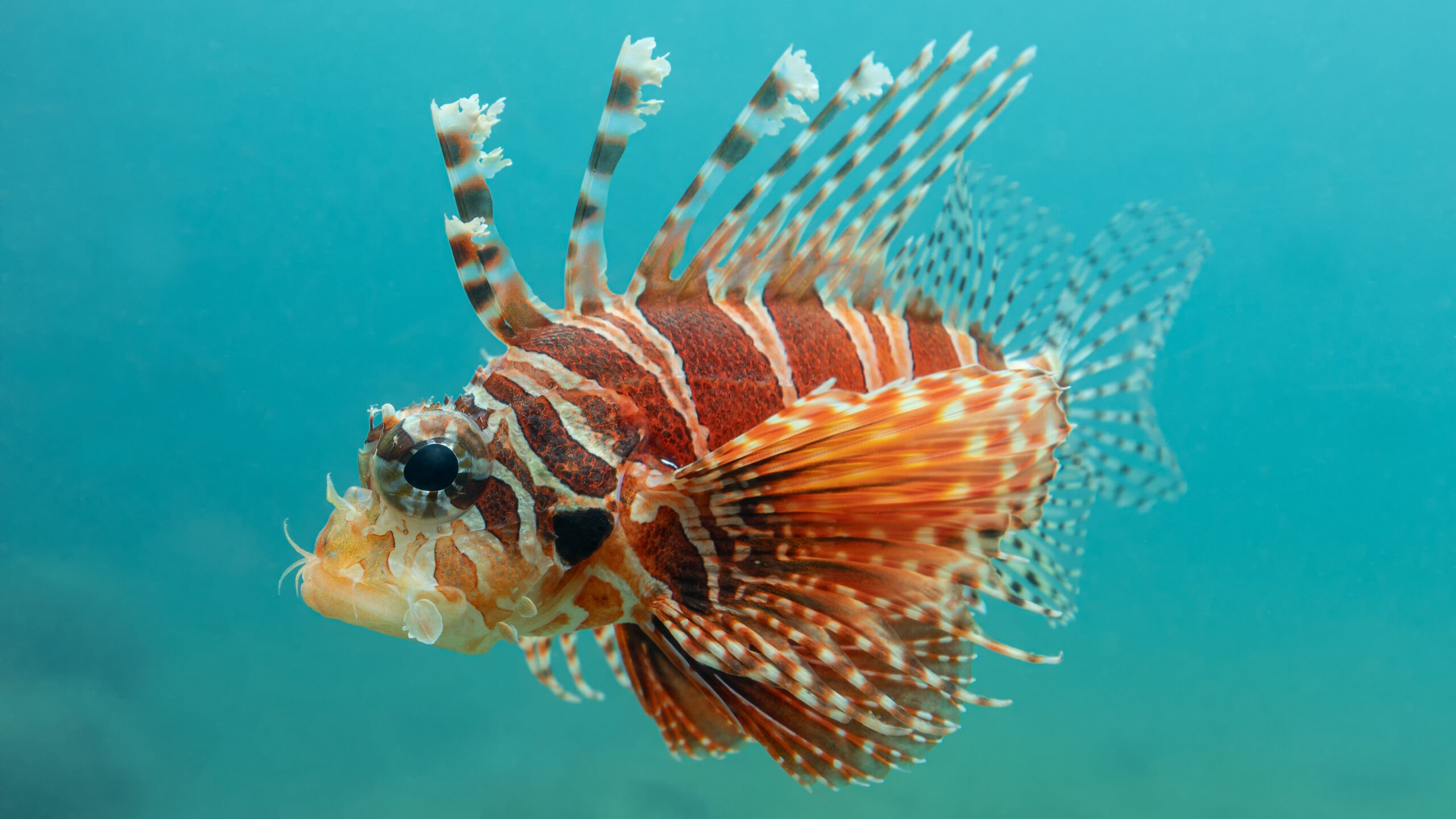
Using its colourful pattern markings and long fins to blend into its coral background, the lionfish has a swim bladder, helping it to stay buoyant whilst in the water.
A ‘wait and strike’ nocturnal animal, the lionfish hides amongst coral and waits for a meal to swim past, before lunging out and eating it. The lionfish devours crustaceans and just about any fish it can catch and has a substantial appetite to replenish the large amount of energy it spends pursuing its prey.

